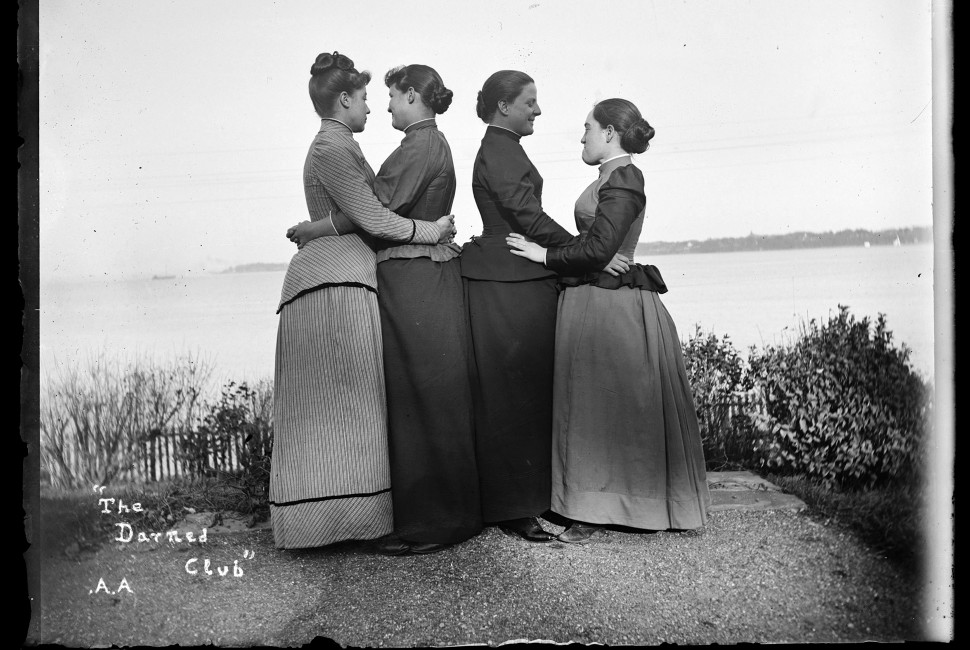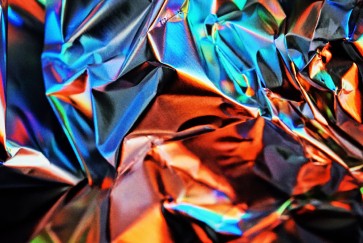While visiting the Alice Austen House Museum in 2018 to give a book talk on street photographer Vivian Maier, Northwestern professor Pamela Bannos became captivated with Austen’s unique story. The 19th-century photographer spent more than 50 years with her life partner, Gertrude Tate, living most of it at “Clear Comfort,” the Austen family’s Staten Island cottage.
Austen was evicted from Clear Comfort in 1945 at age 79, and she spent a year in New York’s poor house before being discovered and then celebrated by Life Magazine, just months before she died. In 2017, the National Park Service designated the Alice Austen House as a national site of LGBTQ history.
When Bannos learned that a letter collection belonging to Austen had been returned to the house 40 years after Austen’s eviction, and that the letters had not yet been transcribed, she began the work of ordering and transcribing them during the spring 2020 lockdown.
“As the voices emerged, I envisioned hearing them — and the podcast idea was born,” Bannos said. She cast 14 current or former Northwestern students as actors in the podcast for the range of their voices and how she envisioned the characters.
Bannos is a professor of instruction of art theory and practice at the Weinberg College of Arts and Sciences and the School of Professional Studies. Her research projects often take the form of site-based historic explorations, like the history of Chicago’s Lincoln Park that was once a cemetery.
She has authored the critically acclaimed “Vivian Maier: A Photographer’s Life and Afterlife,” which presented a counter-narrative to mid-20th-century photographer Vivian Maier.
Ahead of National Coming Out Day (Oct. 11), Bannos spoke to Northwestern Now about the recent launch of her 10-part podcast series “My Dear Alice.”
What made photographers Vivian Maier and Alice Austen interesting research subjects?
In both cases, I felt that they were under-researched or mis-represented. They left no diaries or other personal effects that might reveal their intentions. The other connection that they shared, was that they were both hoarders — including their massive photography output — thereby leaving a large legacy behind.
I used my photography skills and research to reveal Vivian Maier’s whereabouts and strategies by studying tens of thousands of her photographs; and I used similar strategies to tell Alice Austen’s story through the letters that were sent to her, as well studying hundreds of images. Austen’s meticulous scrapbooks and thousands of photographs left traces that the voices in the letters further elaborate.
Given their common interest and geographic proximity, could Maier and Austen have been aware of each other?
Austen would certainly not have been aware of Maier — but it is possible Maier could have been aware of Austen who was one of the original street photographers. In 1896, Austen published a portfolio titled “Street Types of New York.” There also was an “Alice Austen Day” in the summer of 1951 and Life Magazine did a feature on it with her vintage photos and pictures of the event. (Austen was in a wheelchair).
The summer that Austen died in 1952, Maier began shooting with the signature Rolleiflex that established her as a New York street photographer. She also appears on a Staten Island beach in her photos that summer.
I’ve always liked to imagine a connection.
What was “The Darned Club?”
There was a photo Austen made of herself and three other women in 1891 called “The Darned Club” that has been embraced by the LGBTQ community dating back to the 1970s. It was made during the period when she was making elaborately staged pictures.
Many years after the photo was taken, it was said to have been so named by the men who were excluded from the women’s activities. The name also seems to have been a play on words. These same women also had a cooking club, which met regularly, and was also photographed by Austen. There are a few letters that reference darning socks, which is to say, mending holes in the fabric.
Is there anything Austen’s photos or letters can tell us about the secret lives of queer Victorian women? Were Austen and Tate “out” within their Clear Comfort circle?
Alice Austen and Gertrude Tate — the big love story of the podcast — would never have acknowledged being lesbians as far as I know. Many years later, Tate’s sister told the author of the 1976 biography that they had a separate gay circle that didn’t converge with their Staten Island society groups. I could find nothing about that.
There are a few side character stories in the podcast of women who lived openly together.
There are “the two Marys” (episode four) who were born in the 1840s and are buried in the same grave in Lucerne, Switzerland.
There is Mary Sanford, who Austen photographed and is discussed in episode three. Sanford and her partner, a founding member of the ACLU, lived together in Greenwich Village and were part of the burgeoning socialist movement.
And there is Daisy Elliott, who takes over chapter eight, bicycles across the alps, writing Alice many letters, inviting her to “read between the lines.”
How did Northwestern students help in the making of “My Dear Alice?”
The correspondents are mostly young women, with a few notable exceptions, and the letter collection spans the years 1883 through 1898. I cast 20 actors; 14 of them are current or former Northwestern students who I chose because of the range of their voices and how I envisioned the characters. Current student Ella Stevens (’25), reads convincingly for five separate correspondents. It was very fun to work with the students.
“My Dear Alice” is a collaboration with the Alice Austen House Museum, and is supported by a 2022 Northwestern Provost Grant for Research in Humanities, Social Sciences and the Arts.


